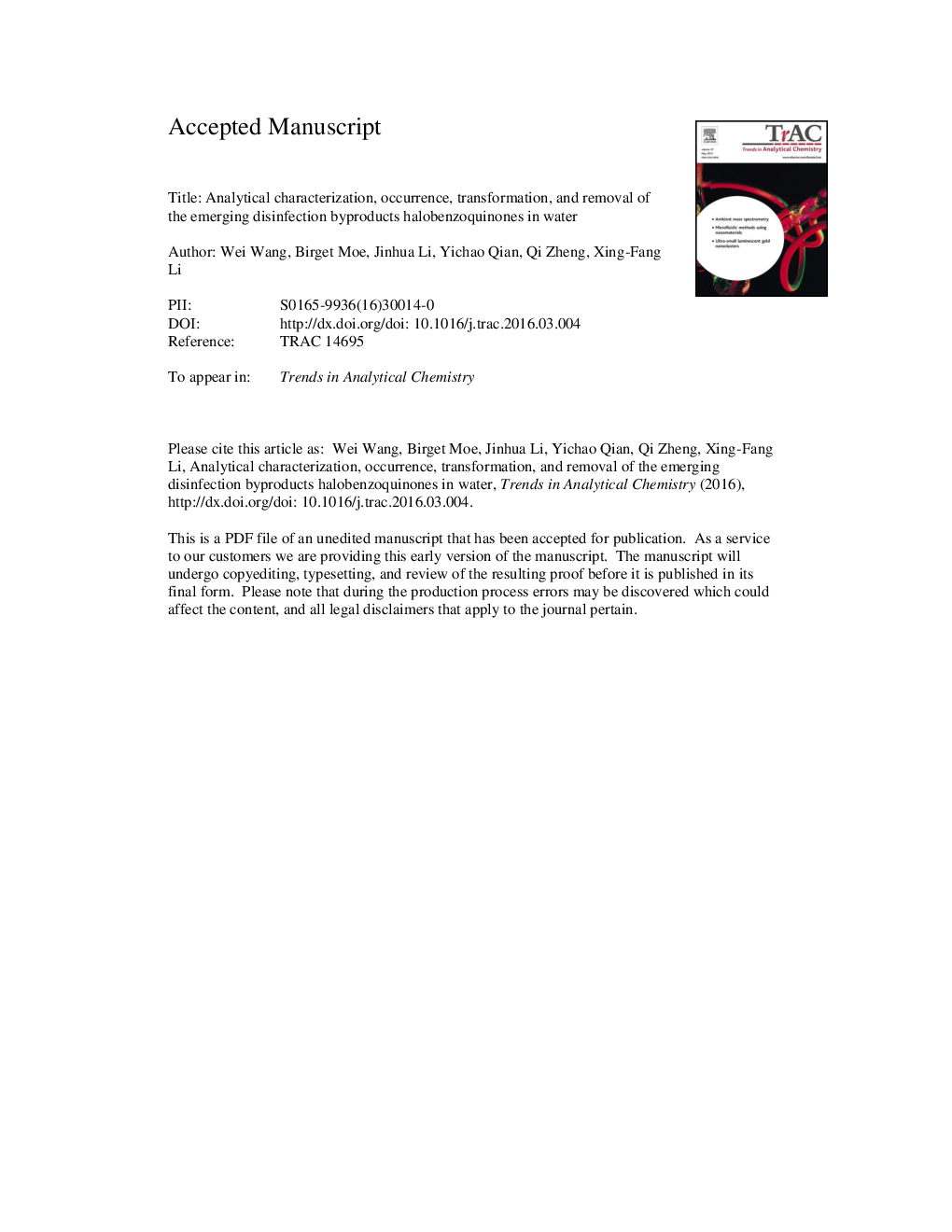| Article ID | Journal | Published Year | Pages | File Type |
|---|---|---|---|---|
| 5141807 | TrAC Trends in Analytical Chemistry | 2016 | 48 Pages |
Abstract
Water disinfection can create an unintended chemical risk from the formation of disinfection byproducts (DBPs). Epidemiological studies have shown a potential association of water disinfection with an increased risk of bladder cancer. The DBPs responsible for the observed adverse health effects remain unclear. Identification of DBPs of health relevance presents a great analytical challenge. Halobenzoquinones (HBQs) are a unique class of emerging DBPs of potential toxicological relevance. This review presents the analytical characterization, occurrence, formation, transformation, and removal of HBQ DBPs in drinking water. Specifically, we will discuss the challenges of HBQ analytical method development and the resulting solid phase extraction and high performance liquid chromatography-tandem mass spectrometry techniques that achieve the determination of HBQs at ng/L levels in water. Other techniques for HBQ analysis, including ultraviolet-visible spectroscopy, electron spin resonance, and gas chromatography-mass spectrometry, will be briefly discussed.
Keywords
Related Topics
Physical Sciences and Engineering
Chemistry
Analytical Chemistry
Authors
Wei Wang, Birget Moe, Jinhua Li, Yichao Qian, Qi Zheng, Xing-Fang Li,
